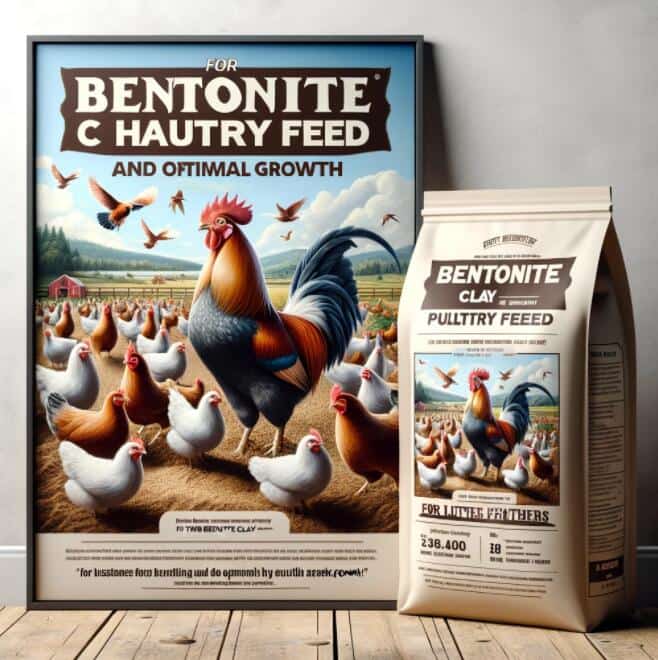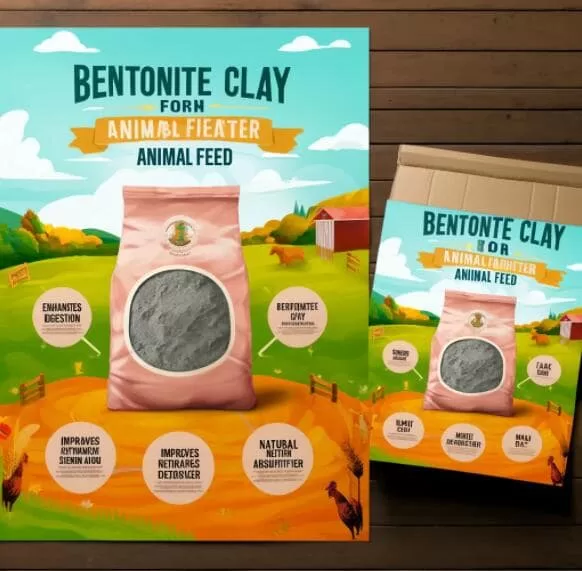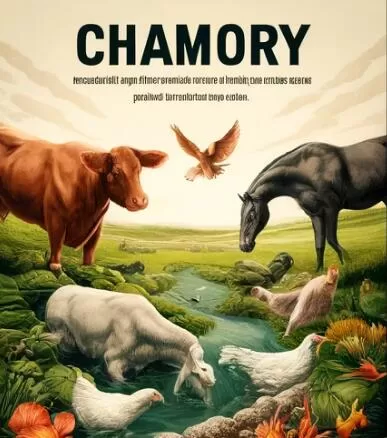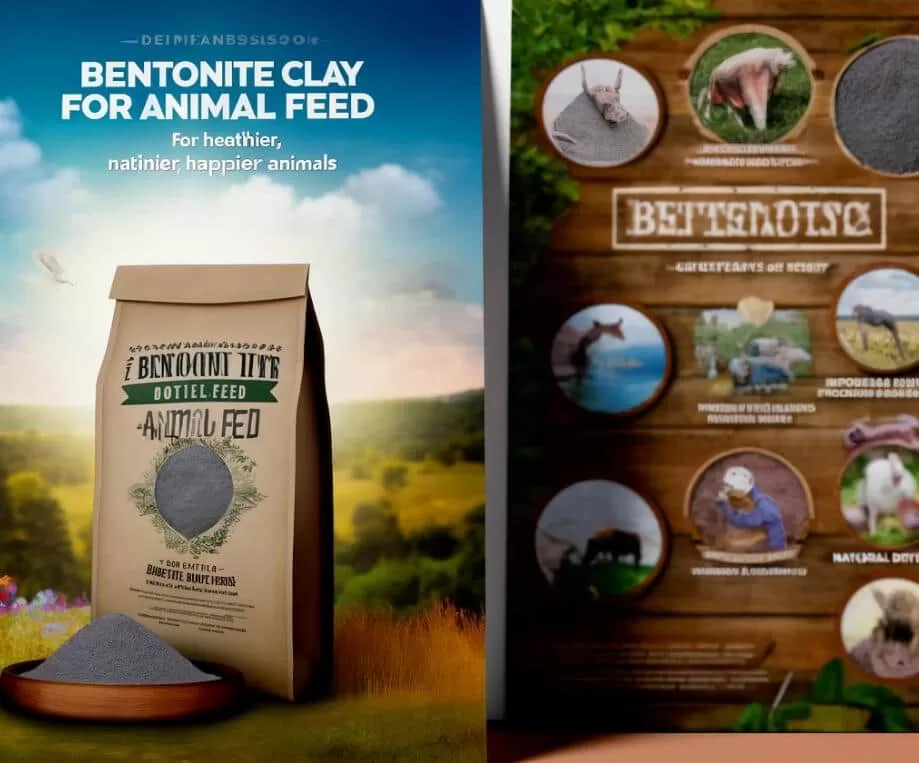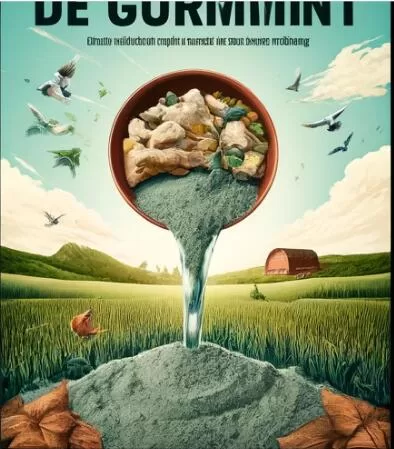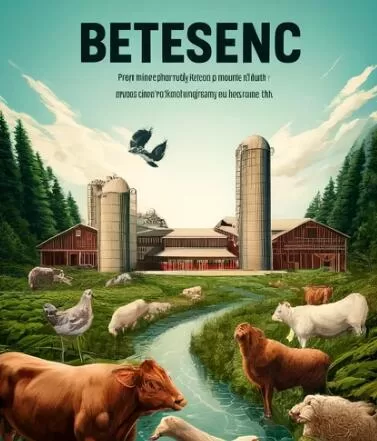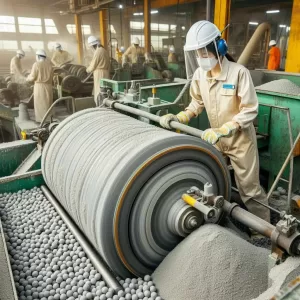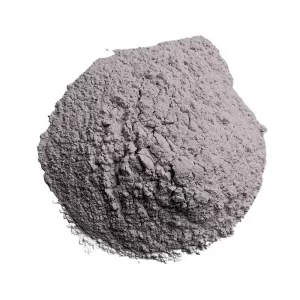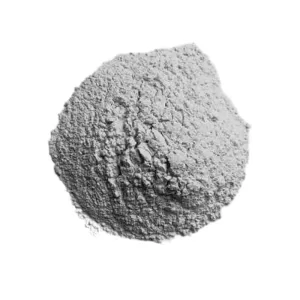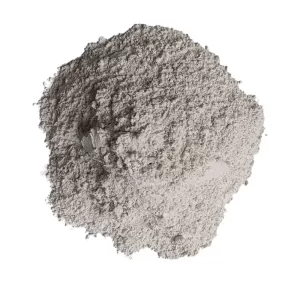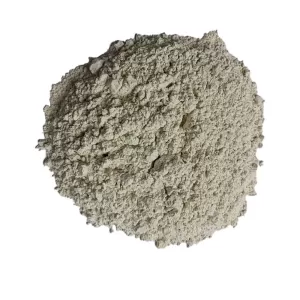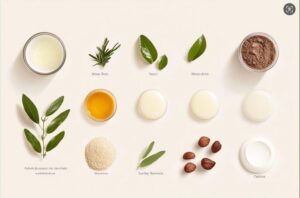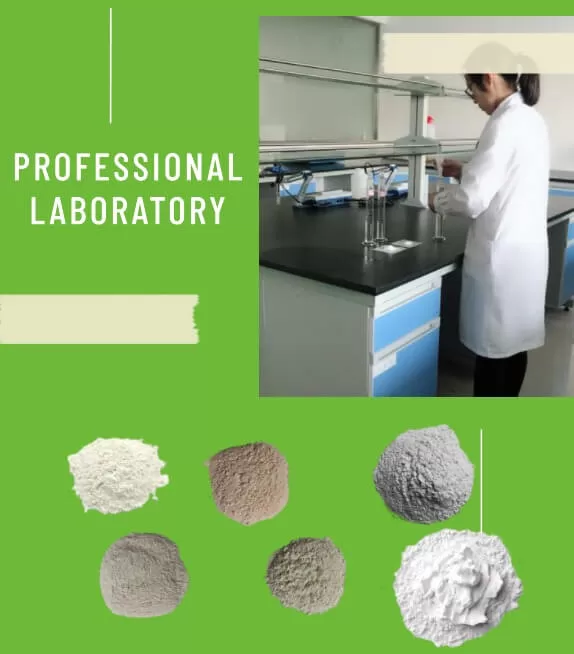Montmorillonite (Montmorillonite), also known as microcrystalline kaolinite, is a silicate clay mineral with a layered structure and lamellar crystals, named for its initial discovery in the city of Montmorillon in France, commonly known as Guanyin clay.
There are 11 kinds of its clades, and their composition is (Na, Ca) 0.33 ( Al, Mg)2[Si4O10](OH)2%26#183;nH2O, by two layers of co-top-connected silica-oxygen tetrahedral sheet sandwiched by a layer of co-prismatic connection of aluminum (magnesium) oxygen (hydroxide) octahedral sheet, constitutes a 2:1 type of water-containing crystalline water structure. It is one of the most highly varied minerals in the clay minerals in terms of crystal structure.
The experimental results of slow scanning by diffractometer indicate that it is a natural nanomaterial. Montmorillonite is through the French antidiarrheal drug montmorillonite powder “Simida” and thousands of households in our country. in 2006, the first sound “Bizi” advertisement in the CCTV gold standard version of the broadcast, marking the Montmorillonite officially in the family.
In recent years, with the rapid development of montmorillonite R & D industrialized products, montmorillonite purity has exceeded the 98% mark; Montmorillonite has exceeded the scope of non-metallic minerals as an independent species of a single branch of the high-tech field of application in medicine, feed, especially in the application of the animal to antidiarrheal, de-mycobacteria, hemostasis, and anti-inflammatory, move the maintenance of the pen and so on the most hotspot
The definition of montmorillonite products in China is not uniform, which often causes ambiguity about them. At present, there are two definitions of montmorillonite products; one is the definition of non-metallic mining industry montmorillonite products: clay ore montmorillonite content greater than 80% is known as Montmorillonite, such as montmorillonite desiccant, etc., and its content of the product more than the amount of suction blue and other methods of qualitative, quantitative grade is no more than a high purity of bentonite only
Montmorillonite is a bentonite clay to play a major role in the composition, but bentonite is not Montmorillonite, but also is not bentonite. Montmorillonite is not bentonite; only Montmorillonite needs to be purified from bentonite to obtain; the other is the pharmaceutical and cosmetic industries on the requirements of the montmorillonite products, which is the true meaning of the Montmorillonite, the concept of its close to the field of scientific research on the definition of the Montmorillonite.
The content of the product is more than that of qualitative and quantitative methods such as XRD; this paper describes the Montmorillonite as the montmorillonite product on this level. To distinguish it from the montmorillonite products in the non-metallic mineral industry, the name dioctahedral Montmorillonite or hexagonal Montmorillonite is often used at home and abroad.
The Montmorillonite used for feed must be purified and determined to be non-toxic (arsenic, mercury, lead, and calcite do not exceed the standard); any direct application of bentonite raw ore will cause harm to livestock.
Montmorillonite’s protective effect on Animals Montmorillonite, a medicinal raw material and excipient in the pharmaceutical industry, has been used for many years. Montmorillonite is odorless, has a slightly earthy flavor, is nearly white or slightly yellow, has a waxy luster, and is non-irritating. Pharmacological studies of Montmorillonite show that it has a good adsorption effect on Escherichia coli, Vibrio cholera, Campylobacter jejuni, Staphylococcus aureus, and rotavirus as well as bile salts; it has a fixation effect on bacterial toxins; Montmorillonite adsorbs and fixes only pathogenic charged pathogens with granule-encoded proteins (CS31 A) on their surface, and has no fixation and removal effect on the normal flora without CS31 A on their surface
Montmorillonite is a good gastric mucosal protective agent for animals.
Nano montmorillonite is obtained by nano-hybridization and has a larger specific surface area, which can greatly improve the adsorption capacity. The adsorption effect is three times that of ordinary montmorillonite products.
Montmorillonite is the only kind of human medicine that has evolved into veterinary medicine, and it is also very effective in stopping diarrhea in animals. it is safe and green. Montmorillonite originates from nature and returns to nature; it does not damage nature and is environmentally friendly.
The protective effect of Montmorillonite on animals is due to its seven functions.
Adsorption/fixation function: The unevenly charged nature of Montmorillonite allows it to adsorb a wide range of disease-causing factors in the digestive tract. Montmorillonite protects animals from mycotoxins and harmful bacteria.
The addition of Montmorillonite has become the first choice for mold removal measures suitable for large-scale feed production. After the test of the Feed Science Research Institute of Zhejiang University, nano montmorillonite has a strong adsorption effect on mycotoxins; the adsorption power (%) is as follows: aflatoxin, 100%; zearalenone, 87%; ochratoxin, 70%; ergot toxin, 100%; and Fusarium tetragonolatum toxin, 91%. Numerous clinical trials have shown that 0.1% is sufficient to solve the problem of mycotoxins in feed. Mucosal Barrier FunctionMontmorillonite is electrostatically bonded with digestive tract mucus proteins, which can increase the amount and improve mucus quality and the mucus’s cohesion and elasticity.
Repair functionMontmorillonite can repair damaged digestive tract epithelial cells.
Coagulation functionMontmorillonite activates coagulation factors, forming a blood clot on the surface of the digestive tract with montmorillonite particles as the core, and also promotes vasoconstriction to slow down the local blood flow and reduce bleeding.
The detoxification function adds Montmorillonite to control the toxicity of residual pesticides. Montmorillonite has a therapeutic effect on lead and other heavy metal poisoning.
No Antibody FunctionThere is no indication that any microorganisms are resistant to the product. Montmorillonite does not enter the bloodstream, is completely excluded from the body, is never residual, and is a green animal health product.
Anti-stress functionTaking Nano Montmorillonite before and after weaning can effectively reduce the stress reaction.
When the seedling pigs are farrowed, Nano Montmorillonite can be taken 3 days in advance, which can reduce the stress reaction caused by fright in catching, and also can reduce the stress defecation in transportation, etc.
Application of Montmorillonite in feedstuffsMontmorillonite is an effective additive for mold removalThe contamination of mycotoxins in feedstuffs and the hazards caused by them are still problems that farmers can easily ignore, and they are easily confused with other diseases. Generally, mycotoxins are mainly produced by four mold genera: Aspergillus (mainly secreted aflatoxin, ochratoxin, etc.), Penicillium (mainly secreted or kanamycin, etc.). Ergot (mainly secretes ergotoxin). Clostridium (mainly secretes vomitoxin, zearalenone. T-2 toxin. Fumonisin toxin, etc.). More than 300 mycotoxins have been isolated and identified, and the toxins mentioned above are only eight of the major toxins.
Generally, molds are divided into two types according to their habits: storage and field. Storage molds mainly refer to the storage of feed or raw materials in the appropriate temperature, humidity, and other conditions to produce molds, mainly Aspergillus spp. The optimal growth temperature of this type of mold is 25-30 ℃ or so, with relative humidity of 80% -90%, except the road Aspergillus, can be infected in the field, can also be reproduced at low temperatures; field molds are Penicillium, Ergot and Clostridium (Fusarium), which are field strains of molds that are usually infected before the grain is harvested, with an optimal growth temperature of 5-25°C.
This mold will also reproduce at low temperatures, which means that such molds will still grow in the winter months and that cold, wet weather is more conducive to the growth of these molds. In the field, plants are infected by molds due to several factors, including moisture in the soil, the seeding period, and the harvesting period. rotation period, fertilizer application, variety of plants, and the occurrence of Phytophthora. weeds, bird pests, etc. When harvested, a crop usually carries certain molds that are damaged during the drying process, so they are not readily noticeable. However, many mold spores survive and begin to sprout and grow during storage and feed-making.
Many toxins have a multiplying effect on each other, and the presence of these toxins simultaneously will greatly exceed the toxicity of the individual mycotoxins.
Montmorillonite has strong adsorption of aflatoxin B1; the adsorption amount increases with the increase of aflatoxin B1 content, and the two are linearly correlated. When the lysine content in the adsorption reaction system was 0.2% and 0.4%, it did not affect the adsorption of aflatoxin B1 by montmorillonite
Montmorillonite has a more obvious adsorption effect on feed aflatoxin B1, and the adsorption effect is enhanced with the increase of the level of double octahedral Montmorillonite; in the case of moldy feed (aflatoxin B1, 39.78 μg/kg) after treatment with double octahedral Montmorillonite, the content of aflatoxin B1 was reduced to 8.88 μg/kg, which meets the feed hygiene standards formulated by China’s Ministry of Health (%26#8804;) and the feed sanitation standards of the Ministry of Health (%26#8804;). 20 micrograms/kg) and European and American standards (0-20 micrograms/kg).
Montmorillonite can balance the feed elements and reduce the content of lead and pesticides in the feed. Excessive lead content in feed will directly or indirectly affect the growth and development of farmed animals and ultimately affect human health through the food chain, so controlling heavy metal lead in feed is particularly important. The addition of 0.5% montmorillonite to the diet significantly ameliorated the lead-induced injury at a lead content of 10 mg/kg Pb and markedly reduced the lead content in whole blood, brain, liver, kidney, bone, and hair tissues of pigs. The results suggest that Montmorillonite has potential therapeutic effects on lead poisoning.
The addition of Montmorillonite can control the toxicity of residual pesticides.
Montmorillonite can replace antibiotics in the treatment of diarrhea. Antibiotics can promote growth and improve feed conversion, which most farmers have accepted. Adding antibiotics in supplemental and starter feeds can control the proliferation of pathogenic microorganisms and accelerate the intestinal immune tolerance process, thus reducing intestinal damage and preventing diarrhea. However, antibiotics used to prevent piglet diarrhea, such as gentamycin, tylosin, bacitracin zinc, quinol, etc., continue to be used to make the pathogenic bacteria resistant, and residues in livestock and poultry products to bring harm to human health. At present, the addition of antibiotics in the feed has been very careful in a number of ways and means, but still by the resistance of non-resistant products. In principle, we can not use antibiotics as much as possible without antibiotics, but we can replace the alternatives and use them sparingly to minimize the harm of antibiotics!
Nano montmorillonite is a new type of mineral agent for the treatment of livestock diarrhea, dysentery, and other diseases with no drug residues, no hormones, no drug resistance, stable efficacy, no toxic side effects, etc., on Escherichia coli, Vibrio cholera, Campylobacter jejuni, Staphylococcus aureus and rotavirus and bile salts have a better adsorption effect on the bacterial toxins have a fixation effect on the gastrointestinal mucosa can be repaired and improve the pathogenic factors of the Defense function. It adsorbs germs and contains rich vitamins, minerals, and trace elements. In the case of increasing resistance to antibiotics and sulfonamides and an increasing number of drug-resistant strains of bacteria, the application of nano montmorillonite for the prevention and treatment of livestock and poultry diseases seems to be very important, and it completely solves the problem of antibiotic resistance and residue
Montmorillonite can replace zinc oxide in the treatment of diarrhea. Another efficacy of nano montmorillonite in treating diarrhea is that it can completely replace zinc oxide in livestock and poultry feeds (especially suckling piglet feeds) for anti-diarrhea. High zinc levels (2500-3500 ppm) can harm piglet growth and development. Diets added more than the normal requirement of 20-30 times the high level of zinc are bound to break the original balance of various elements. Zinc excess on the absorption of copper and iron is detrimental, and high zinc can lead to iron, copper secondary deficiency, and anemia. Foreign studies believe that when zinc intake exceeds the excretion capacity of various excretory organs, it will destroy the internal stability mechanism. Therefore, high zinc feed time has been more strictly limited. For over half a month, piglets will appear pale skin, hair coarse and curly, anemia, and other phenomena. Piglets were weaned 2 weeks after using high zinc (zinc oxide 2000 ~ 3000 mg / kg) with an anti-diarrhea growth promotion effect; if once stopped adding high levels of zinc, change the diet, piglets’ diarrhea will occur again. The study also showed that after feeding a high dose of zinc (3000 mg/kg) and absorbing it through the pig’s digestive system, its daily zinc excretion was 33 times higher than that of the group fed the basic diet. Therefore, adding high doses of inorganic zinc will cause resource waste and residue and cause environmental pollution.
Jinhua City Greet Animal Nutrition Technology Co., Ltd. test proved that adding 1.5 kg of nano montmorillonite per ton of feed can completely replace zinc oxide, the dosage is only about half of that of zinc oxide, the cost is relatively low, and there is an advantage in replacing high zinc, and because Montmorillonite does not have the side effects of zinc oxide, its growth rate, feed-to-meat ratio and the use of zinc oxide group compared to the performance of a better
Montmorillonite can reduce the stress response of livestock. Adding nano montmorillonite in feed can effectively reduce the stress response of livestock.
Nano montmorillonite can be added to the feed 3 days in advance when the young animals are released, reducing the stress caused by shock in catching and the stressful defecation in transportation, etc.

